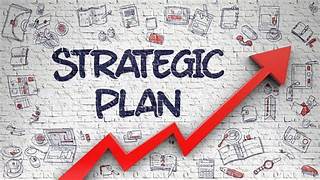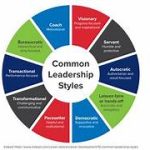The Importance of Strategic Planning in Achieving Long-Term Goals
Strategic planning serves as the cornerstone of organizational success, providing a clear roadmap for achieving long-term goals. Whether in business, personal development, or community initiatives, the process of strategic planning involves setting objectives, analyzing resources, and formulating actionable steps. This comprehensive approach ensures that efforts align with the overarching vision, enabling sustainable progress. In this article, we delve into the significance of strategic planning, its key components, and how it influences the attainment of long-term goals.
Defining Strategic Planning
Strategic planning is a systematic process that organizations and individuals use to define their direction and allocate resources effectively. It involves determining where you are, where you want to go, and how to get there. By outlining specific goals and identifying potential obstacles, strategic planning provides a framework for decision-making and prioritization.
The Role of Strategic Planning in Long-Term Success
- Clarity of Purpose: Strategic planning begins with a clear vision and mission. This clarity ensures that all efforts are directed towards a unified objective. For example, a company aiming to expand its market share must identify specific strategies, such as product innovation or entering new markets, to achieve this goal.
- Resource Optimization: Effective strategic planning ensures optimal use of resources, including time, money, and personnel. It helps organizations allocate resources to areas that yield the highest returns, preventing wastage and inefficiency.
- Proactive Problem-Solving: By anticipating potential challenges, strategic planning equips organizations to address issues before they escalate. For instance, a detailed risk assessment can mitigate financial losses during economic downturns.
- Alignment Across Stakeholders: A well-crafted strategic plan fosters alignment among stakeholders, from employees to investors. This collective understanding enhances collaboration and minimizes conflicts.
- Adaptability to Change: Strategic planning incorporates flexibility, allowing organizations to adjust their strategies in response to market dynamics, technological advancements, or unforeseen challenges. This adaptability is crucial for long-term resilience.
Key Components of Strategic Planning
- Vision and Mission Statements: These foundational elements articulate the purpose and aspirations of an organization. A compelling vision inspires stakeholders, while a mission statement provides a practical guide for achieving it.
- Situational Analysis: Tools like SWOT (Strengths, Weaknesses, Opportunities, Threats) analysis and PESTLE (Political, Economic, Social, Technological, Legal, Environmental) analysis help organizations assess their internal and external environments. This understanding informs strategic decisions.
- Goal Setting: SMART goals (Specific, Measurable, Achievable, Relevant, Time-bound) ensure that objectives are clear and attainable. These goals act as milestones on the path to long-term success.
- Strategy Formulation: Developing strategies involves identifying the actions required to achieve objectives. For instance, a nonprofit organization might focus on fundraising initiatives, partnerships, and community engagement to expand its impact.
- Implementation Plan: An actionable plan details the steps, timelines, and responsibilities necessary to execute strategies effectively. It ensures accountability and progress tracking.
- Monitoring and Evaluation: Regularly assessing performance against strategic objectives allows organizations to measure success and make necessary adjustments. Metrics and key performance indicators (KPIs) play a vital role in this process.
Benefits of Strategic Planning
- Improved Decision-Making: With a clear roadmap, decision-makers can evaluate options based on their alignment with long-term objectives. This reduces the likelihood of impulsive or counterproductive choices.
- Enhanced Focus and Prioritization: Strategic planning helps organizations concentrate on high-impact activities, ensuring that resources are directed toward initiatives that matter most.
- Increased Motivation and Engagement: A well-defined plan provides employees and stakeholders with a sense of purpose, boosting morale and commitment.
- Competitive Advantage: Organizations with robust strategic plans are better positioned to anticipate market trends, adapt to changes, and outperform competitors.
- Sustainable Growth: By aligning short-term actions with long-term goals, strategic planning ensures consistent progress, fostering sustainability.
Case Studies in Strategic Planning
- Apple Inc.: Apple’s strategic focus on innovation and design has propelled it to become a global leader in technology. By consistently aligning its product development with its vision of creating user-friendly, aesthetically pleasing devices, Apple has maintained its competitive edge.
- Starbucks: Starbucks’ strategic plan to expand globally while maintaining a consistent brand experience has been pivotal to its success. Its emphasis on customer engagement and product quality exemplifies the power of strategic alignment.
- Nonprofit Sector: Organizations like the World Wildlife Fund (WWF) rely on strategic planning to achieve their conservation goals. By setting clear objectives, such as reducing carbon emissions or protecting endangered species, WWF has made significant strides in environmental sustainability.
Challenges in Strategic Planning
- Uncertainty: Rapid changes in technology, politics, and economics can render plans obsolete. Organizations must balance long-term goals with the need for agility.
- Resistance to Change: Implementing new strategies often meets resistance from stakeholders accustomed to traditional approaches. Effective communication and stakeholder involvement are essential to overcome this challenge.
- Resource Constraints: Limited financial, human, or technological resources can hinder the implementation of strategic plans, especially for small businesses or nonprofits.
- Execution Gaps: Even the most well-designed plans can fail without proper execution. Ensuring accountability and monitoring progress are critical to bridging this gap.
Best Practices for Effective Strategic Planning
- Involve Key Stakeholders: Engaging employees, customers, and partners in the planning process fosters buy-in and ensures diverse perspectives.
- Communicate Clearly: Transparency about goals, strategies, and progress builds trust and alignment.
- Embrace Flexibility: Regularly reviewing and updating the plan ensures it remains relevant in a dynamic environment.
- Leverage Technology: Tools like project management software, data analytics, and collaborative platforms enhance the efficiency and effectiveness of strategic planning.
- Focus on Execution: Establishing clear roles, responsibilities, and timelines ensures that plans are implemented successfully.
Conclusion
Strategic planning is indispensable for achieving long-term goals, offering a structured approach to decision-making, resource allocation, and progress evaluation. By fostering clarity, focus, and adaptability, it empowers organizations and individuals to navigate complexities and seize opportunities. While challenges exist, the benefits of strategic planning far outweigh the obstacles. By embracing best practices and committing to continuous improvement, organizations can unlock their full potential and achieve sustainable success.


